There are tens of thousands of colors in the design, how are they reflected in the four CMYK inks?
Let us talk about another concept: outlets. Through the outlets, we can understand the principle of color and gradient printing.
1.outlets
In printing, different shades of the same color are expressed by using inks of different thickness and density.
As shown in Figure 1, it is the normal effect we see, from 0% gray to 100% black. If you enlarge the printed matter enough, you can actually see the following effect: some dots of different thickness and density are covered on the paper.
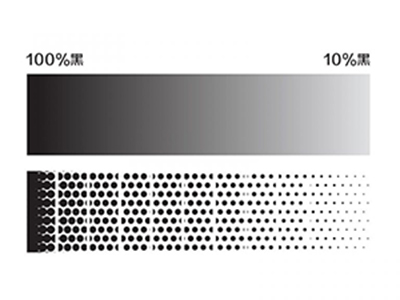
Figure 1, Gray and black and white gradient outlets
But the outlets are small enough, such as the commonly used 157 lines (number of rows/inch) and 200 lines (number of rows/inch), you can see the above effect.
2.Screen hanging
Please refer to Figure 2 and Figure 3. Let us take a magenta M as an example. Through different density of dots, it shows 100%, 80%, 50%, and 20% effects.
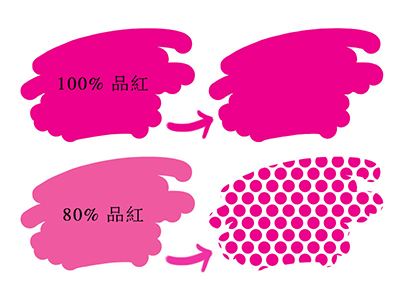
Figure 2, magenta of 100%,80% outlets
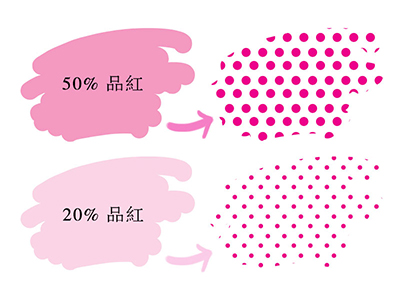
Figure 3, magenta of 50%, 20% outlets
3.CMYK gradient outlets
Same as the black gradient in Figure 1, the figure below is a schematic diagram of the four-color outlets gradient of CMYK.
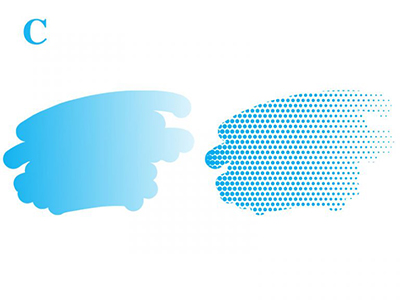
Figure 4, C cyan gradient Outlets
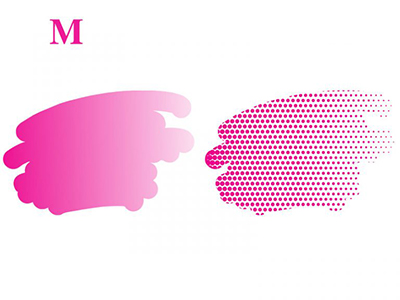
Figure 5, M magenta gradient outlets
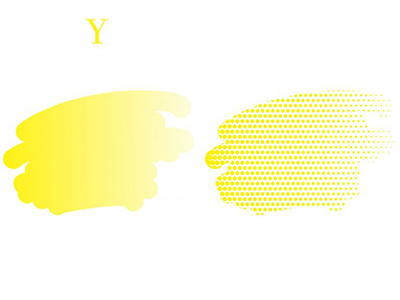
Figure 6, Y yellow gradient outlets
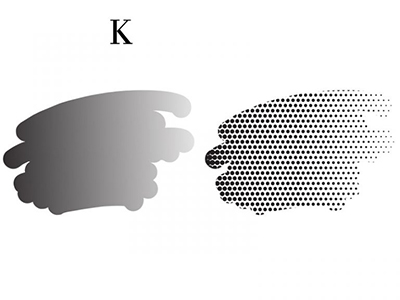
Figure 7, K black gradient outlets
4.Two-color superimposed outlets
We combine CMYK four colors in pairs, one color is 100%, and the other color is from 0% to 100%.
As shown in Figure 8, M+C=blue; through different outlets of C (M=100%, C=0-100%), more different blues can be obtained;

Figure 8
As shown in Figure 9, M+Y=red; through different outlets of Y (M=100%, Y=0-100%), more different reds can be obtained;

Figure 9
As shown in Figure 10, M=100%, K=0-100%;

Figure 10
As shown in Figure 11, C=100%, M=0-100%;

Figure 11
As shown in Figure 12, C=100%, Y=0-100%;

Figure 12
As shown in Figure 13, C=100%, K=0-100%;

Figure 13
As shown in Figure 14, Y=100%, C=0-100%;

Figure 14
As shown in Figure 15, Y=100%, M=0-100%;

Figure 15
As shown in Figure 16, Y=100%, K=0-100%;

Figure 16
5.Four-color Outlets and software settings
Through the different outlets of CMYK four-color ink, from 0%-100%, theoretically any color can be obtained.
Figure 17, 18, when we set the color on the software panel, the percentages of the four colors of CMYK correspond to the dots of each color.
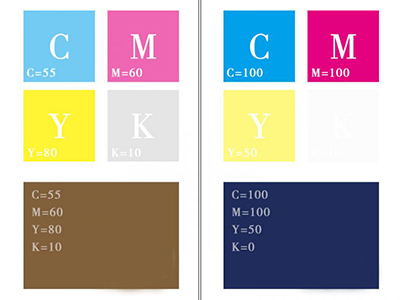
Figure 17, Four-color, three-color mixing
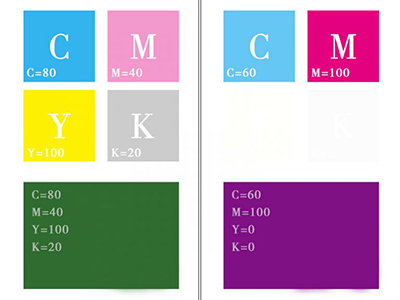
Figure 18, four-color, two-color mixing
6.to sum up
1. When printing, it is used to cover the different thickness and density of ink to express the different shades of the same color (refer to Figure 1);
2. Through the outlets, we only use a black ink, and can also print the effects of different shades of black, white, and gray that the naked eye can see. 100% is pure black, 0% is colorless, the middle is gray, and the other C blue, The three colors of M magenta and Y yellow are the same (refer to Figure 4-7);
3. Through the different outlets of CMYK four-color ink (from 0%-100%), theoretically any color can be obtained (refer to Figure 17-18);
4. When we set the color on the software panel, the percentages of the four colors of CMYK correspond to the outlets of the respective inks.
PS:The effect of the above outlets is a schematic diagram. The actual four-color superimposed outlets have different shapes and angles. These are automatically processed by the software, and the designer does not need to care too much. To understand more……





